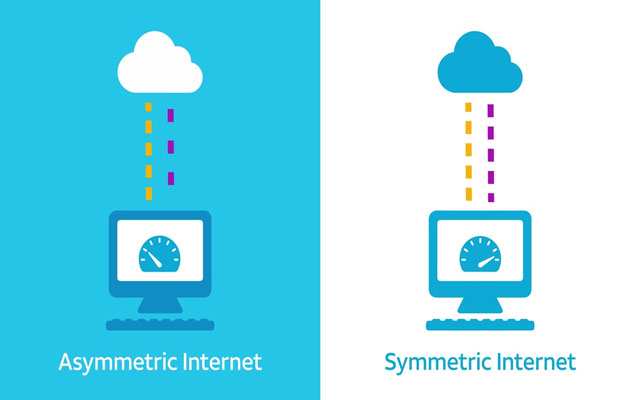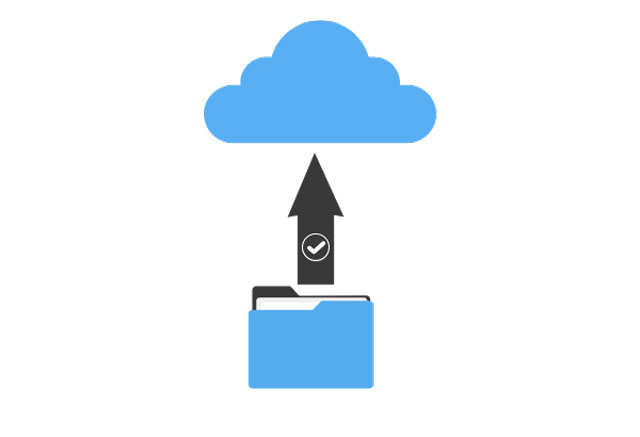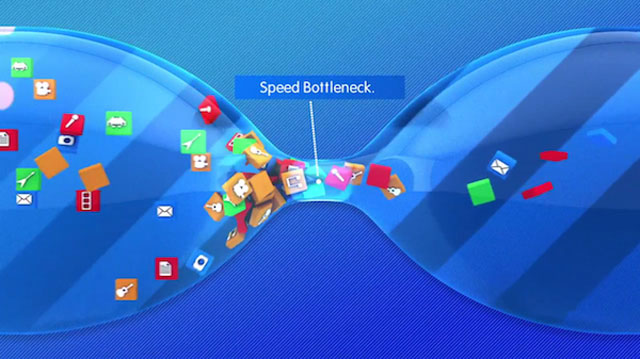Same upload and download speed: Secrets of symmetrical connections
Have you ever heard of the same upload and download speed?
Sounds strange, but it’s possible!
When an Internet plan has the same upload and download rates, it is called a symmetrical one.
But is this worth it?
Is it better than an asymmetrical connection, which means upload speeds are usually a fraction of your download speeds?
So if you want to find out more about this topic, keep reading!

Same upload and download speed
Download speed vs upload speed - What’s the difference?
First of all, you should be aware of two types of Internet speeds: downloads and uploads.
Download speed
The speed at which information goes from multiple servers on the Internet to your own Internet-connected device is referred to as download speed.
If you open Instagram on your phone, for example, your download speed will affect how long it takes to load your feed or watch a friend's Stories.

Download speed
Download bandwidth is required for the following activities:
-
Music or video streaming
-
Reading a blog post or article
-
Viewing your social media feed
-
File downloading
Upload speed
The rate at which data travels from your Internet-connected device to the Internet is referred to as upload speed.
So, when you post to Instagram Reels, your upload speed determines how quickly your post loads onto Instagram's server and appears in your feed.

Upload speed
Upload bandwidth is required for the following activities:
-
Participating in a Zoom meeting
-
Google Docs article or blog post creation
-
Social media posting
-
Organizing a livestream
To know download and upload speed, you can run a download speed test like MySpeed.
It will provide you with the result in seconds.
Symmetrical connections
As mentioned earlier, symmetrical connections refer to the upload and download speeds being the same.
Assume your download speed is 100 Mbps.
If your Internet connection is symmetrical, your upload speed will be 100 Mbps as well.

Symmetrical plans come with the same download and upload speed
But here comes a question: Is it normal for download speed to be the same as upload speed?
Well, download speeds are often substantially faster than upload rates on most Internet services.
Because we (all Internet users) download far more information than we submit, Internet providers have traditionally allotted less bandwidth to upload.
That’s why most Internet connections, such as cable and DSL, are designed to maximize download speed.
Is it good to get same upload and download speed: Symmetrical vs Asymmetrical speed
Download speed faster than upload speed is normal.
Wifi upload speed faster than download is a problem.
So how about upload and download are the same?
To answer the question of whether it is worth getting the same download and upload speed, compare it with an asymmetrical connection.
An asymmetrical connection is a type of Internet connection where the upload speed differs from the download speed.
For example, 60/3 means a download speed of 60 Mbps and an upload speed of 3 Mbps.
Now, let’s consider the pros of both!
|
Asymmetrical connections |
Symmetrical connections |
|
|
First, compared to asymmetrical speeds, there are no Internet bottlenecks with symmetrical connections.
If you're undergoing slow uploads and dropped calls, your data is most likely "clogged" due to a lack of usable bandwidth during peak traffic times.
As a consequence, you and your employees may see a significant drop in productivity.
Because of the high demand, symmetrical connections ensure that your upload speeds are not hampered.

No bandwidth bottleneck with symmetrical speeds
We all know that uploading files to the cloud is time-consuming.
However, you can upload and update at the same time with symmetrical speeds, allowing you to cross back up your projects off your to-do list.
One more thing that the same upload and download speed connection is great is that cloud services that are easily accessible.
Because of the increased flexibility it provides, more and more businesses are migrating to the cloud.
For secure cloud access, high upload speeds are required, so symmetrical connections can ensure that your cloud services are always available.
Why do you need the same upload and download speed?
As mentioned earlier, we use more download data than upload for daily online activities.
If you mostly use Facebook, send emails to your customers, or look up sports scores on Google, you probably don't need a symmetrical Internet.
However, a symmetrical Internet is a huge benefit if you are one of the following types of people: students, businesses, telecommuters, or content creators.

Upload speed is important to some people
These people frequently upload PDFs, large graphic files, and videos to the Internet to share them with clients, coworkers, students, and teachers.
These files are typically much larger.
For example, the video accompanying this article is approximately one gigabyte (GB) in size.
Here's how long it would take to upload that one GB file to YouTube at various upload speeds:
|
Upload speed |
File size |
Time to upload |
|
10 Mbps |
1 GB |
15 minutes |
|
100 Mbps |
1 GB |
1 minute 30 seconds |
|
300 Mbps |
1 GB |
30 seconds |
Data:
https://www.reviews.org/Internet-service/what-is-symmetrical-Internet/
Best symmetrical Internet plans
Fiber Internet providers offer the best symmetrical Internet plans.
Given that fiber is the only way to obtain a symmetrical Internet.
The following plans provide incredibly fast upload speeds, ensuring that you have enough bandwidth to post content online, and host live streams.
The plans will also allow you to share your Wi-Fi with a large number of other users without having to worry about a slow connection or long buffering times.
Have a look:
|
Internet plans |
Download/Upload speed |
Cost |
|
AT&T 5G Internet |
5,000 Mbps / 5,000 Mbps |
$180.00/mo |
|
Google Fiber 1 Gig |
1,000 Mbps / 1,000 Mbps |
$70.00/mo |
|
CenturyLink Fiber Internet |
940 Mbps / 940 Mbps |
$65.00/mo |
|
Verizon Fios Gigabit Connection |
Up to 940 Mbps / Up to 880 Mbps |
$89.99/mo |
Read more: Google Chrome throttle download speed.
Fiber has symmetrical speeds because it has a much larger data capacity than other Internet types.
It is a connection made up of bundled strands of fiber-optic cable.
Photon signals travel through the cables at the speed of light, carrying massive amounts of data.
Meanwhile, it avoids electromagnetic interference that is common with copper cables and DSL Internet wiring.
Right now, fiber is the only type of Internet that provides symmetrical speeds.
Cable Internet may catch up in a few years as technology evolves, but for the time being, fiber is the only way to go.
Symmetrical connections simply perform better, are more reliable, and provide a richer, more robust Internet experience.
This is especially true when uploading large files, sharing high-definition video presentations, or hosting data that your customers need to access quickly.
For a small price difference, symmetrical connections offer a significantly better Internet experience than asymmetrical connections.
However, the question is not which is better, but which is best for your business.
Unlike other Internet providers, VNET Fiber is always "symmetrical."
It means that the upload and download speeds are the same.
A fast 300 Mbps x 300 Mbps connection is included in the VNET Fiber base package.
Final words
That’s all for today. Reading this post, we hope you are clear about symmetrical connections, which come with the same upload and download speed. If you like the given information or have any questions, comment below to let us know!
![Why is my download speed so SLOW but upload FAST: 3+ causes [Updated]](https://gospeedcheck.com/filemanager/data-images/Why-is-my-download-speed-so-slow-but-upload-fast_1.jpg)
![Why is my Xbox download speed so slow? 5 little-known reasons [SOLVED]](https://gospeedcheck.com/filemanager/data-images/Why-is-my-Xbox-download-speed-so-slow_1.jpg)



4 Comments
Jonathan Young
Why can't my ISP give me symmetrical bandwidth?
Leave a Comment
Your email address will not be published. Required fields are marked *MySpeed
Symmetric bandwidth is possible with DSL - at the low end, and it is the default for T-1, T-3, OCx and other fiber connections. It isn’t really possible with DOCSIS cable
Leave a Comment
Your email address will not be published. Required fields are marked *Charlotte Morris
What technical reason prevents ISP from offering a symmetrical connection?
Leave a Comment
Your email address will not be published. Required fields are marked *MySpeed
No technical reason, but an economic reason. Bandwidth is expensive; they do not want to pay for upstream bandwidth that will not get used
Leave a Comment
Your email address will not be published. Required fields are marked *Leave a Comment
Your email address will not be published. Required fields are marked *